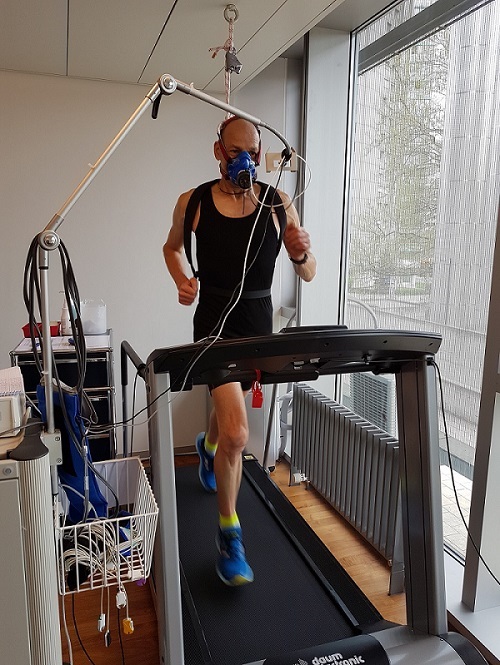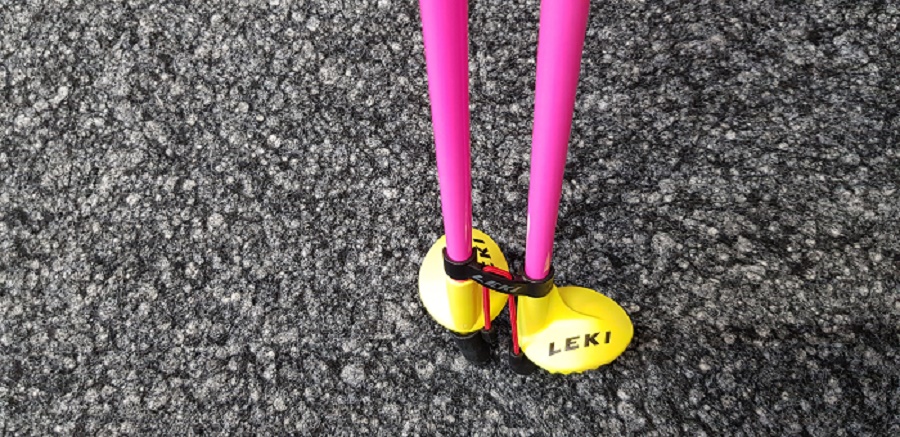How to improve your maximal oxygen uptake?
To improve maximal oxygen uptake, a high low-intensity training volume mixed with high-intensity gives the best results
Maximal oxygen uptake or VO2 max is largely inherited and its trainability is limited. The increase is around 20%, in exceptional cases up to 50%, but this is very rare.
You can train like a madman, but to ever reach world class level is decided by how big your engline or VO2 max is. It is, so to speak, the talent that an athlete possesses.
What is VO2 max?
Maximal oxygen uptake V̇O2 max determines the highest rate of oxygen consumption attained during maximal exercise intensity. That means how much blood you can deliver to the muscles and how much of that oxygen you can deliver to convert fuel into energy. So maximal oxygen uptake means volume of oxygen and is a measure of the efficiency of your entire aerobic system.
By the way, the little dot over the V "V̇O2 max"
signifies a one-minute volume. If there was no dot over the V as you may be
more familiar with, it might have been a three-minute volume or only a 30-second
volume.
So, to standardize it, science has put all volumes to a one-minute volume. That’s the reason why it’s called V̇O2 max and that’s where the term V dot came from.
Thus, V̇O2 max can be expressed in two ways - as an absolute rate in liters (litres) of oxygen per minute (L/min). Or as a relative rate in milliliters of oxygen per kilogram of body mass per minutes (e.g. mL/kg/min).
The latter description is often used to compare the performance of endurance athletes. However, V̇O2 max generally does not vary linearly with body mass among individuals.
So, similarities of the performance capacities of
individuals that differ in body size. But it must be done with appropriate
statistical methods.
How to measure V̇O2 max - through testing
V̇O2 max is the criteria or the most precise test of aerobic or cardiovascular fitness. Its significance is that your maximum capacity is to use oxygen in a staggered exercise test.
The testing process isn’t easily available because it requires to measure your ventilation very precise. This occurs by measuring the concentrations of oxygen and carbon dioxide of inspired and expired air during the testing.
Elite and ambitious cross-country skiers do the maximal test in a sports lab, either on a running treadmill or a large roller ski treadmill. An athlete achieves VO2 max when his oxygen uptake remains steady even though the intensity during testing increases.
The test runs up to 15 minutes or until the athlete is totally exhausted to find the true maximal oxygen uptake. It’s a painful procedure in V̇O2 max testing where the athlete passes from aerobic metabolism to anaerobic metabolism. And like mentioned before, it’s measured in L/min or in milliliters/minute per kilogram (mL/min/kg) of body weight.
 My first VO2 max test in April 2018 on a treadmill after 25 years away from XC ski racing.
My first VO2 max test in April 2018 on a treadmill after 25 years away from XC ski racing.A result of an elite athlete who takes part in an aerobic event such as long distance running, rowing, cycling or cross-country skiing typically reach scores in excess of 80 ml.kg-1.min-1 . Some elite cross country skiers exceed 90 ml.kg-1.min-1. And a few world class female endurance athletes score higher than 70 ml.kg-1.min-1.
However, having a high VO2 max doesn’t absolutely mean that you will be successful, but it is a huge advantage. In endurance sports and especially in cross country ski competitions, there are also other factor to consider, like technique, mental and physical strength, etc..
I’m always careful to the results from athletes that where tested in the lab because it’s hard to prove and some top athletes aren't listed anywhere.
How to increase V̇O2 max?
The maximal oxygen uptake is a combination of the volume of blood being pumped by your heart (cardiac output) and the max heart rate. Thus, the ability to process the oxygen carried in your blood, you have two possibilities to increase VO2 max and that is through:
- Increasing your cardiac output and the ability of the body to extract oxygen from the blood. This occurs through prolonged endurance training to increase the cardiac output, which makes the heart larger and stronger. By regular training, your resting heart rate will lower because it can pump more blood per beat than when you are untrained. Also, your body’s ability to extract more oxygen out of the arterial blood will improve through regular endurance training as well.
- If we analyze even further, you have another option to increase maximal oxygen uptake to its highest level. And that is through increased volume of endurance and increased intensity of interval training.
Building volume
A large part of your ability to improve VO2max in response to training is influenced by your DNA. But even when genetics can account for as much as 47%, you can push your maximal oxygen uptake higher with effective training. Low intensity high volume between 60 - 82% heart rate <2mM is better than doing most of your training at lactate threshold between 2 – 4 mM.
Elite cross country skiers train between 83 – 90 percent of their training in the preparation period. And so do most athletes in other endurance sports.
The world's leading work physiologists and coaches concur that VO2max is best improved by training mostly in the low intensity zone at around 70%.
High intensity training
High-aerobic intensity endurance interval training is significantly
more effective than performing the same total work at either lactate threshold
or at 70% HRmax, in improving VO2max. You will get the best result by mixing up low intensity with high intensity 2 to 3 times a week.
The changes in maximal oxygen uptake correspond with changes in stroke volume, indicating a close link between the two. We can say that :
- A big VO2 max is largely about a big stroke volume
- A big stroke volume is largely about a big end diastolic volume
- A big end diastolic volume is largely about taking the time to stretch the heart with a whole lot of big full heartbeats.
So, high intensity interval training proves to be a more potent enhancer of VO2 max than volume. But to get the quality and to hold the speed and intensity up in every interval bout, you need that low intensity volume.
If you train at lactate threshold in most of your training sessions, you are too tired for high intensity above 95 percent of your heart rate.
The maximal oxygen uptake or VO2 max of World class endurance athletes changes during the year. In the off season, VO2 max is a bit lower than when they are super in form.
Marit Bjørgen, the World's most successful female cross-country skier was a good example. Her maximal oxygen uptake (VO2 max) measured in the spring was between 2 - 5
mL/(kg·min)
lower than in the fall.


